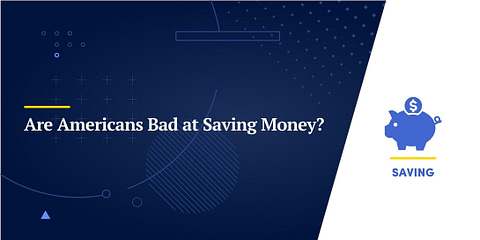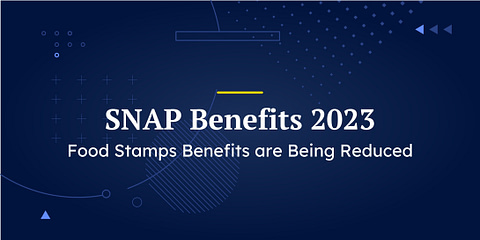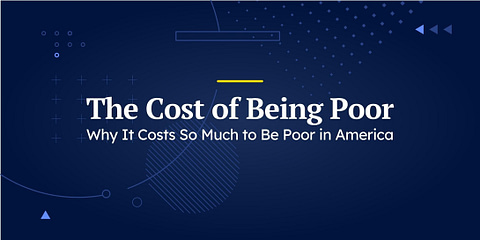If you watch or read international and political news, you have heard about countries that receive foreign aid or assistance. Many countries, including the United States, provide financial assistance and aid to other countries. This aid is given for a variety of reasons and may involve large amounts of money.
A Brief History of Foreign Aid
Since the beginning of history, political entities have been interacting, both positively and negatively. Sometimes they harm each other, sometimes they help each other. When they help each other we call it aid.
Aid can take many forms, from allowing friendly groups to cross through your territory or sharing technology to simply giving money to another nation.
In American history, one of the first instances of foreign aid came in 1812 when the United States provided $50,000 to Venezuela to assist with disaster relief after a major earthquake hit the nation’s capital. The bill authorized President James Madison to use the funds to purchase and ship food to the country.
Foreign aid quickly became more commonplace and took on different forms. World War II saw the Lend-Lease program, a form of foreign aid where the United States supplied the Allies with more than $50 billion (nearly $700 billion today) worth of war supplies either through loans or direct gifts. The post-War Marshall Plan provided large amounts of reconstruction aid to damaged countries and created markets for US-made goods.
Aid continued to expand throughout the Cold War, and became a major tool of US foreign policy. The US sent large quantities of aid to developing-nation governments that it saw as anti-Communist.
Since the end of the Cold War, the focus of aid has become more diverse, but aid is still used primarily as a tool to advance US policy interests. It is not charity. Today the government spends $30 to $40 billion each year on aid to other countries.
Types of Foreign Aid
Like other donor countries, the US supplies several types of foreign aid.
Humanitarian Aid
Humanitarian aid is a response to natural and man-made disasters. The aid that pours into countries afflicted by earthquakes, storms, wars, and famines is humanitarian aid.
Humanitarian aid often comes in the form of basic supplies like food, potable water, and shelter, and also in the form of reconstruction assistance. It is generally a response to an incident and is not budgeted in advance for specific countries.
Development Aid
Development aid is designed to assist a country’s economic, social, or material development. Projects may be designed to build infrastructure, improve education or healthcare, strengthen administrative capacity, and much more.
Development aid covers a wide variety of expenditures, but it is proactive rather than reactive and can be budgeted and programmed in advance. It is a response to existing conditions in a country, not to a specific incident.
Military Aid
Military aid is designed to help a country develop the capacity to defend itself against aggression or maintain internal stability. It may take the form of weapons, nonlethal equipment, training, or a combination.
US military aid often involves equipment purchased from US manufacturers and is sometimes seen as an aid to the arms industry as much as it is an aid to the receiving nation.
Multilateral Aid
The US gives money directly to other nations, but it is also a donor to many multilateral agencies, like the International Monetary Fund, the World Bank, regional development banks, and others.
These agencies also provide assistance to foreign governments. The US influences their decisions but does not control them.
Loans vs Grants
Not all aid is a gift. Aid programs often combine grants in cash or in kind with low-interest loans.
The Top Five Recipients of US Aid
The United States provides foreign aid to almost every country on the planet, though the amounts given vary widely. In 2023, for example, the largest recipient of aid, Ukraine, received $16.6 billion, while the country receiving the least aid, Qatar, received less than $16,050.
1. Ukraine
- Military Aid Received: $0 billion
- Economic Aid Received: $16.6 billion
2. Ethiopia
- Military Aid Received: $0 billion
- Economic Aid Received: $2
In 2023, Ethiopia received $2 billion in financial aid from the United States government, with all of the funds going toward economic rather than military purposes.
A plurality of the aid, $1.27 billion, came as humanitarian emergency-response aid.
The US also sent $344.8 million in aid for the country’s food security assistance, and $92 million for basic health, out of which $45 million went towards maternal and child health and $38 million to fight against HIV/AIDS.
3. Jordan
- Military Aid Received: $0.47 billion
- Economic Aid Received: $1.1 billion
Jordan receives the third-most US foreign aid of any country. The majority of the aid that Jordan receives is economic assistance rather than military aid.
The greatest portion of aid the country receives, $910 million, is spent on education, more specifically, $850 million went towards education policy and administrative management and $63 million towards basic education.
The US also sent $470 million to Jordan for governance aid, including $430 million for security, $40 million for government and civil society expenses.
The remaining amount went towards humanitarian aid ($91 million), health and population ($89 million), administrative costs ($40 million), economic growth ($34 million) and infrastructure ($8 million).
4. Afghanistan
- Military Aid Received: $0 billion
- Economic Aid Received: $1.2 billion
In 2023, Afghanistan received $1.2 billion in financial aid from the United States government. $870 million was spent on humanitarian emergency-response aid, out of which $750 million came in the form of relief coordination, $86 million for material relief assistance and services and $26 million for emergency food assistance.
The next greatest portion of aid, $95 million, went toward the healthcare system, including basic health, maternal and child health and water supply and sanitation. The United States also provided $47 million for infrastructure, $44 million for governance and $43 million for agriculture.
5. Somalia
- Military Aid Received: $64 million
- Economic Aid Received: $960 million
Somalia received $960 in financial aid and $64 million in military aid in 2023. A generous amount of the financial aid went towards relief coordination ($870 million) and emergency food assistance ($90 million).
Out of the remaining amount, $46 million was used for developmental food aid, $22 million for basic education, $17 million for administrative costs, $15 million for agriculture and $11 million for the health sector.
Where Does US Foreign Aid Come From?
The United States has many different agencies that are responsible for providing financial aid to countries around the world.
The US Agency for International Development is the main provider of development aid. The agency’s mission statement includes promoting democratic values and advancing a free world through international development and disaster assistance.
Other agencies, such as the State Department, Peace Corps, and Environmental Protection Agency also provide foreign aid.
The military, through the Department of Defense and the individual branches of the Armed Forces, provides foreign aid in the form of military assistance and disaster relief.
Congress must budget aid funds. Congress typically votes on country-specific packages and on discretionary funds that can be applied quickly in the event of a humanitarian crisis.
Why Does the US Provide Foreign Aid?
There are many reasons for countries, including the United States, to provide financial aid.
Of course, there are altruistic reasons to provide financial aid. The United States is one of the most powerful nations and economies on the planet. It has the money to assist other countries that may not have powerful economies. The various forms of financial aid the US provides can go toward improving things like infrastructure and education in other countries.
However, the reality is that foreign aid is a powerful tool for accomplishing a country’s geopolitical goals.
The Lend-Lease program was one of the United States’ first major financial aid programs, providing nearly $700 billion (in today’s dollars) worth of military assistance to the Allies during World War II. This aid obviously benefited the United States in that it helped win the war.
The later Marshall plan aided reconstruction by providing US funds to badly damaged countries. Those countries gained, but the money also went largely to US industries that provided goods, keeping wartime industries open and productive.
Today, military and economic aid advance American goals in potentially more subtle ways. One way is that the US can promise aid to countries in exchange for their taking certain actions.
For a hypothetical example, the US could promise financial aid to a country that agrees to allow election auditors to ensure its elections are truly fair and democratic or to open its markets to American businesses and goods. This provides American companies with a new market.
Providing military assistance to nations where extremist groups are based can protect the United States by helping those nations prevent the growth of those groups in the first place.
Aid can also help build ties between the United States and foreign countries. In some cases, the US competes with geopolitical rivals to provide aid and help strengthen these ties.
For example, nations that receive significant aid from another country, but not the US, could be more willing to work with that other country in the future. This can mean worse trade deals for the United States and more difficulty developing trade with that market.
By providing aid, the US can increase its influence over foreign governments which can pay dividends down the road.
Ultimately, the United States offers foreign aid for the simple reason that the aid it sends to other countries is paid back in the form of stronger relationships and influence that make the United States more powerful economically or politically.
A clear illustration of how the US uses its aid to increase its influence can be seen in how its aid packages change when a country joins the United Nations Security Council. A 2006 study from the University of Chicago found that the United States offered an average of 59% more aid to nations when they joined the UN Security Council, the organization’s most powerful group. The aid provided by the US returned to normal levels once the nation left the Security Council.
Which Countries Give the Most Aid?
The United States is the top provider of international aid in terms of dollars, providing $54 billion in aid in 2023. Germany provided the next-largest amount of aid at $3.24 billion.
💰 Top donors (in dollars):
- United States – $54 billion
- Germany – $3.24 billion
- European Commission – $2.87 billion
- Japan – $1.44 billion
- Sweden – $1.12 billion
When looking at aid provided compared to Gross National Income, the United States is much less generous than other nations, giving about 0.2% of the nation’s GNI. This is well below the Organisation for Economic Co-operation and Development’s recommended target of giving at least 0.7% of GNI.
💰 Top donors (as a percentage of GNI):
- Luxembourg – 1.05%
- Sweden – 0.89%
- Norway – 0.86%
- Germany – 0.85%
- Denmark – 0.67%
Aid can be a controversial topic. Many people question why the government sends aid to developing nations when so many Americans are in financial distress. Foreign policy specialists typically reply that aid is a cost-effective way of extending American influence and that the trade and security benefits outweigh the costs.
That debate is not likely to end any time soon, and there is room for difference among informed opinions. Aid will continue to be debated, but it’s likely to be part of the US budget long into the future.























